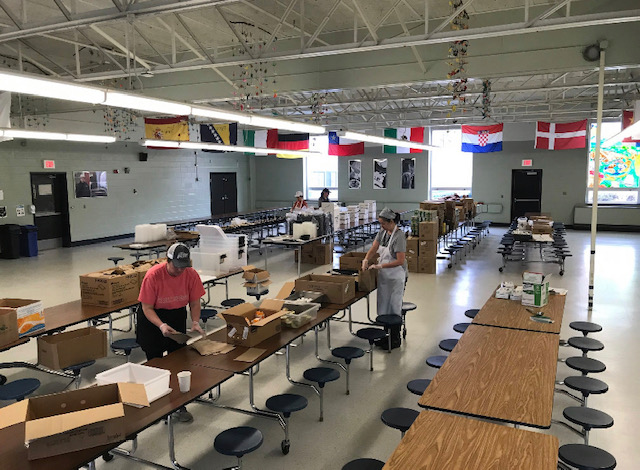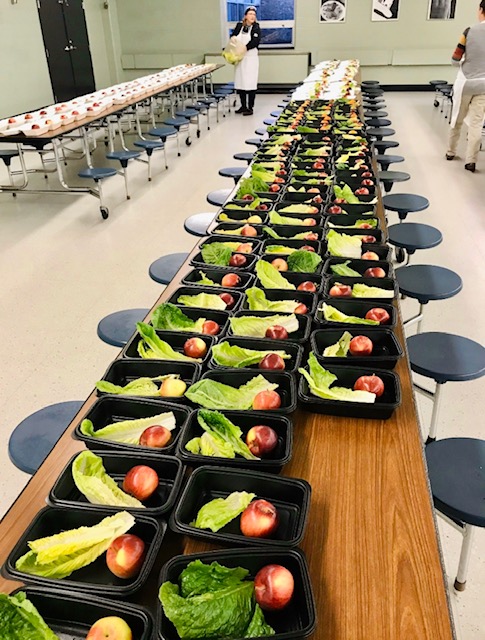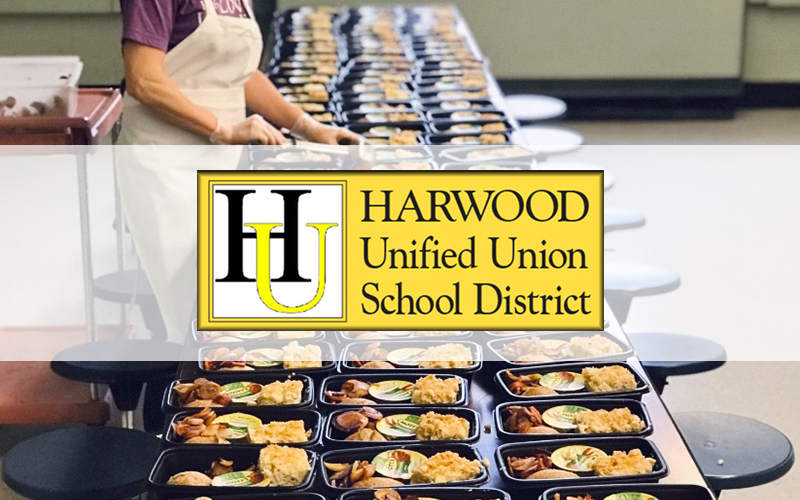Public school meals are a lifeline for many students who depend on getting two out of three meals a day at school. Luckily for us in the Mad River Valley, Harwood Unified Union School District (HUUSD) co-food service directors Erica Dolan and Paul Morris anticipated this need long before the government-ordained school closure decision was made. From the first day of school closures on Wednesday, March 18, all children from the HUUSD had access to free breakfast and lunch.
Offering early access to free meals required a combination of foresight and an elaborate series of bureaucratic hoop-jumping from the district’s food service directors. Dolan and Morris were already making plans for meal deliveries a week before schools closed. “The Thursday before schools closed, we had an idea that this was going to happen, so we contacted several of our stakeholders from Agents of Education and Hunger Free Vermont to figure out how we could create a meal delivery application. We filled out the application on Friday and got approved for the meal program before schools closed,” said Dolan.

The weekend before schools closed, Dolan and Morris spent their days “off” researching different meal delivery methods, studying examples from schools in different parts of the country that had already shut down. “We thought, OK, if this is going to happen, what is it going to look like? We printed out plans from school districts all over the country, studied them and came up with our own plan,” said Dolan.
The food service directors took a calculated risk in completing the application and the meal delivery plan before school closures were finalized. “We were very prepared to put those meals out on Wednesday. But we took a risk ordering those things ahead of time. Because maybe schools wouldn’t close, and we would get stuck with those things,” said Dolan.
Now, any child age 18 and under can pick up two breakfasts and two lunches on Monday and Wednesday as well as one breakfast and one lunch on Friday at six schools in the district. But even this meal pickup process was wrought with regulatory barriers. “It’s all about federal regulations,” said Dolan. “Thatcher Brook is the only eligible meal distributing site that we have. So all the meals have to physically touch Thatcher Brook before they’re distributed. So we cannot just serve meals out of Harwood. The only way we are able to serve free breakfast and free lunch is to cook them at Harwood, then ship them to Thatcher Brook, and then deliver them to our other sites.”
OUR PASSION
“We feel that the work has to be done. We are happy we have a job right now. We are here for the kids. This is our passion. So if we needed to do this all over again, we would do it all over again,” said Dolan, on how it feels to be working through the COVID-19 crisis.
At this point in the interview, Morris jumped into emphasize that getting meals to students was a group effort. He said the story of feeding children in the HUUSD is not just about the food service directors, it’s about the staff. “Everybody’s been working their tails off and doing anything that we’ve asked them to do. Everybody’s got a job, and everybody’s been getting this stuff done. It’s not about me and Erica; it’s about our entire staff,” said Morris. “And everyone’s been cooperating great. From the front office staff to the IT guys to the custodians. It’s a group effort and everyone’s really doing a great job.”
The cooperation of the school administrators has also been a critical factor in the food and nutrition division’s success. “Without our supervisor’s support, without Michelle Baker, Brigid Nease and Lisa Atwood overseeing our operations, we could never get this done. They trusted us to make decisions. I think that’s why other districts were not able to have such a fast outcome as us,” said Dolan. In total, the work of delivering food to students has called on all 16 food service employees as well as 10 to 15 other staff.

Keeping CDC sanitation recommendations at the forefront of the process, all food is cooked and prepared at Harwood, which has the biggest kitchen and, with students gone, the most space in the cafeteria to operate out of. “Most of the CDC regulations are already regulations in our kitchen, so they’re very easy to follow. It’s more the distance, keeping 6 feet apart, that’s changed. That’s the only adjustment we’ve had to make,” said Dolan. “We are using the whole cafeteria to have people as spread out as possible,” Morris chimed in.
Despite being responsible for preparing fewer meals per day, the food service staff has experienced challenges in the process. “Some challenges were figuring out how to deliver the food, get everyone organized, be efficient with everybody’s time and get everything that we needed for the first meals. We needed to make sure we had the containers and the silverware,” said Morris. “Plus, this was the first time the entire food service staff had worked together under one roof.”
Although the way kids get their school lunch has radically changed, the quality of the meals stays the same. “Right now, we have a lot of local produce on hand. We have Green Mountain Harvest lettuce. Carrots from Pete’s Greens. Red Hen rolls. American Flatbread pizza,” said Dolan. “Fresh fruit and milk comes with every meal,” added Morris.
Before ending the interview, The Valley reporter wanted to know what’s for lunch today. It was mac and cheese, a Red Hen roll, applesauce and local roasted carrots. Yum.






